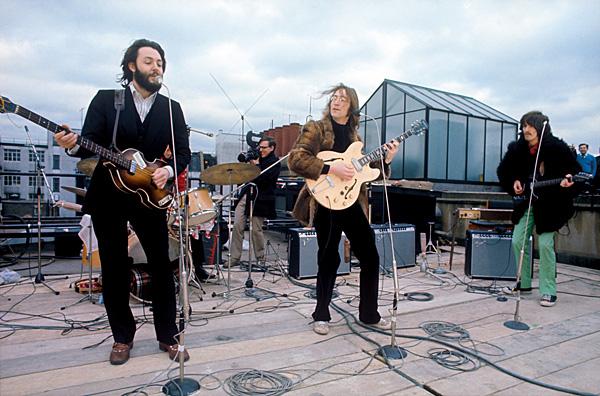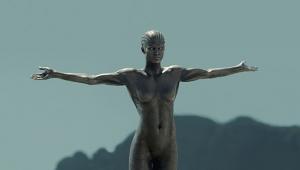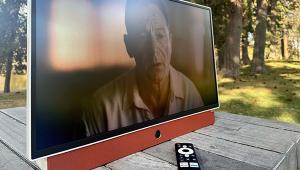Wow, I learned so much by reading this. Already having seen the Jackson film I must simply now watch it again with new knowledge. Perhaps because of time and the scant often poor quality of old Beatles live performances it is overlooked what a fantastic, compelling, and potent band The Beatles were live. I think this new Jackson film sets makes the case that the studio wunderkinds were also one hellacious live band. It is indeed poignant that the rooftop concert was the last time time they performed live. One can imagine that if the breakup did not happen and The Beatles continued they may have resumed proper concerts. Obviously they very much enjoyed playing together for a live audience.
The Making of The Beatles' Let It Be and Peter Jackson's Get Back

The project began in Fall 1968, when The Beatles announced to fans that they would play three concerts at London's Roundhouse, a 1700 capacity venue, in October or November, even before the November 22 release of The Beatles. In late October, Paul McCartney reached out to American-born director Michael Lindsay-Hogg, to ask his help in turning that event into a television special of some kind. Lindsay-Hogg had spent several years directing Associated-Rediffusion TV's Ready Steady Go! weekly pop music program. The Beatles had hired him in 1966 to film promotional films for their single, "Paperback Writer"/"Rain," and again, in early September '68, promo videos for their first Apple single, "Hey Jude"/"Revolution," at Twickenham Film Studios, in front of an invited audience of 150-200.
Not long after filming the latter, the director moved into The Rolling Stones' offices on Maddox Street. "I'd already been talking to Mick Jagger about a television special The Stones wanted to do," he says. Meanwhile, Paul invited him to meet with the four Fabs at Apple, at 3 Saville Row – a four minute walk from The Stones' office. "When we were doing the promo for 'Hey Jude,' between each take, there was about a 10 to 12 minute gap, and, without knowing what else to do, they just started to play some of the go-to songs of the time, old Tamla Motown, etc. And Paul noted at the meeting, 'You know, we had a good time playing to the audience that day. So we've been thinking we could do a television special. Do you want to direct it for us?' I wasn't gonna say no to that one." At further meetings, McCartney suggested shooting documentary footage of them rehearsing for the concert, for, perhaps a half hour teaser TV special to air a week before the show. "No one had ever seen The Beatles rehearsing."
Lindsay-Hogg returned to work on the Stones special, coming up with the idea for what eventually became The Rolling Stones' Rock and Roll Circus, filmed on December 11 and 12, with not only The Stones performing, but The Who, Jethro Tull, and The Dirty Mac – the latter comprised of Eric Clapton, Keith Richards and. . . John Lennon. (The special suffered delays and problems, preventing its airing, eventually finally coming to light in 1996.)
He then returned to work prepping The Beatles' special. "Just before Christmas, I asked the four of them, 'So what do you think the television special is going to be?' And Paul just said, 'Oh, listen – we'll work that out.' Nobody knew anything."
In the meantime, Lindsay-Hogg had Apple Films producer Denis O'Dell book several weeks at Twickenham's big – and only – Studio 1 soundstage. "We had shot 'Hey Jude'/'Revolution' there, so it had nice associations," he explains. "And I thought we needed some physical space. I had looked at their studio, under construction in the basement of their Apple building, but I thought that would be too many people in too small a space." Twickenham, he notes, was somewhat of a "mom & pop" studio – one of the smaller production facilities in town, with only a single, big soundstage and several post production spaces. There was also a building which housed a combination of a small restaurant (where he and the band would end up having lunch each day), and a bar, where crew would typically spend their lunchtimes.
"People were more using Elstree, Pinewood and ATV Studios, which were bigger. Denis got a good deal on it – it wasn't too expensive," and would soon be filming The Magic Christian there, whose cast included Ringo, once the Beatles project wrapped on the stage. "Nobody knew anything, at that point, what we would do there, other than that we were going to do a TV special, and would start the day after New Year's."
- Log in or register to post comments


Hey, thanks so much! It was quite a lot of fun to research and learn about from these great folks. I'm glad you enjoyed it.

The Beatles' iconic album "Let It Be" and Peter Jackson's documentary "Get Back" offer a captivating journey into the band's creative process. Jackson's film provides an intimate look at the making of the album, revealing the camaraderie and challenges faced by the legendary group. It's a must-watch for any Beatles enthusiast.
https://theauthorconnect.com/how-to-write-a-childrens-book-tips-and-tric...

.....Just a quick correction to info mentioned in the article about a camera used to film the "documentary"....
The article states: "The (Arriflex 16BL) cameras had 400 ft. film magazines, which ran for 21 minutes."
Actually, 400 feet of 16mm only lasts for 11 minutes if shot at 24 frames per second.
(And the image of the camera manual above the cited sentence is owned/copyrighted by "ARRI AG" of Munich, Germany, not "Apple Films Limited".)
(I've worked with and researched Arriflex cameras from about 1987 to 2006 and own an Arriflex 16-M camera.)
Thank you!

You're probably right re the run time on the 400 ft magazines. That came from Les Parrot himself, who was the camera assistant and second camera operator on the film. He said they went through 80 reels of film, through the whole project.
And thanks for the I.D. of the ARRI camera image - that had also come to us from Les.















































